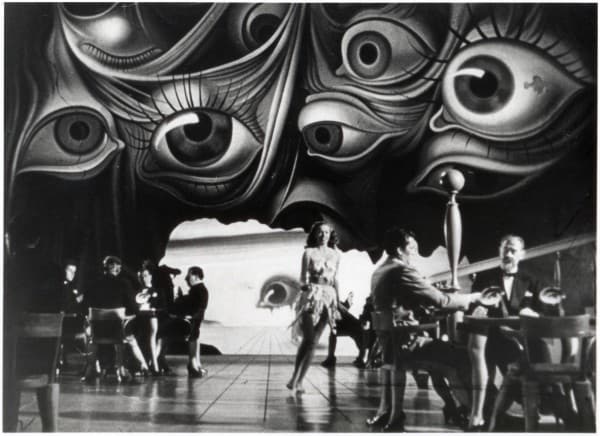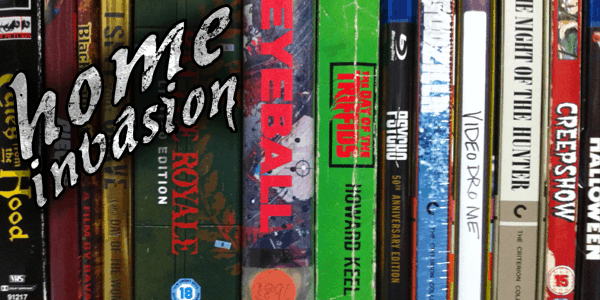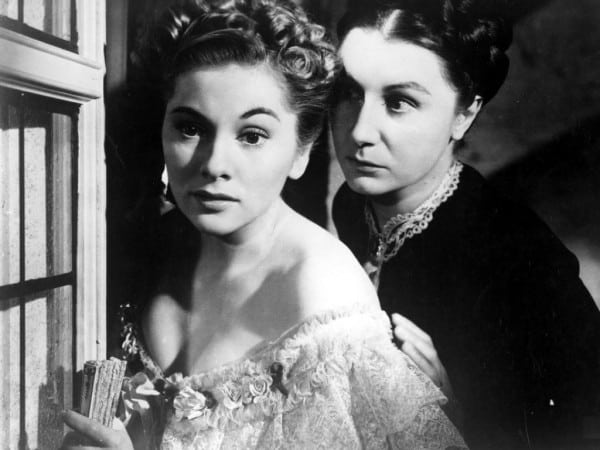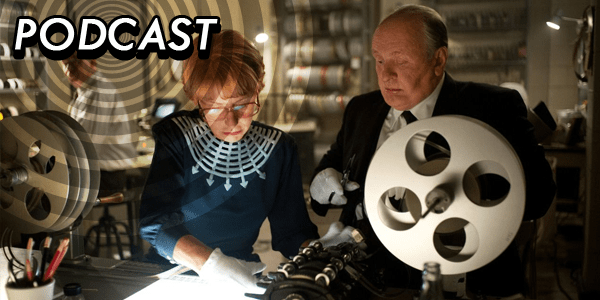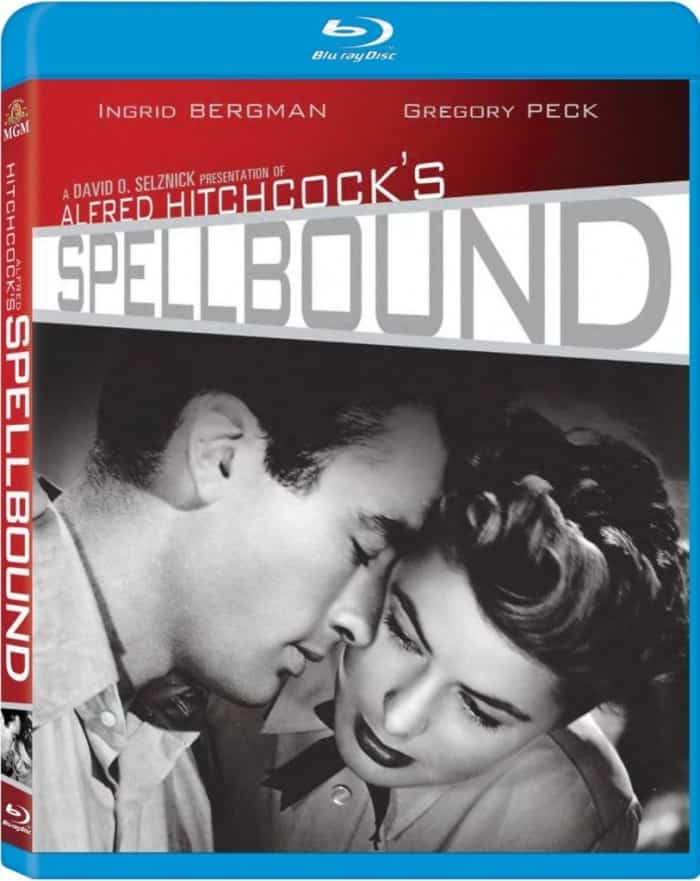
Blu-ray Review: ‘SPELLBOUND’
Spellbound is the second Alfred Hitchcock film we are looking at this week. MGM has released three of the director’s acclaimed films on Blu-ray. Spellbound is a slight departure from 1941’s Rebecca – the previous film we just looked at – even though they share many similarities as well. Aside from existing as early examples of the talented director’s career, both films focus on an out of the ordinary relationship between two seemingly normal individuals. In both cases you deal with characters whose mental state is being torn apart due to memories of their past. It’s an interesting comparison though I feel Spellbound explores this idea in more intriguing ways. Obviously in much more direct ways as well. Hitchcock’s foray into psychoanalysis is a complex film that needs to really be studied to fully appreciate its intricacies. Join me as we take a look into its mind.
THE MOVIE
Spellbound is one of those films that may come across as a boring relationship film on the surface. Though I would argue that it is actually one of Hitchcock’s more thought provoking films. Ingrid Bergman plays Dr. Constance Peterson, a psychoanalyst in a facility who is soon to be under the direction of Dr. Edwardes (Gregory Peck). Upon the arrival of the mysterious doctor, the two begin to form a close “nonprofessional” relationship. It is soon revealed that Dr. Edwardes isn’t necessarily who he says he is. In fact, he may even be involved in the disappearance of the said doctor. This leads to a search for the impostor by the police and Dr. Peterson helping to allude her lover from the authorities in the hopes that she may figure out what is causing his amnesia.
One of the fist things that became aware to me after watching the film is the role reversal that takes place several times over the course of the film. In the initial setup, you have Bergman playing a strong-willed and academic mind who seems to think nothing of the fact that she is clearly in the boy’s club in the world of psychoanalysis. Even in the lunch-room scene a little bit later on, you see nothing but men sitting around her with their suits and pipes. She seems to take solace in the fact that she too is one of the guys. It isn’t until Gregory Peck enters the film that we see her exhibit her female side. The doctors even tease her for her schoolboy crush and mock their love notes to one another. Here we see Peck as Dr. Edwardes being the more dominant one in the relationship. There are a number of signs soon after showing Peck breaking down – hallucinating to some extent when presented with lines carved into the color of white – but it isn’t until the two of them are on the run that we see the roles reverse. Bergman goes back to being the stronger partner as Hitchcock almost emasculates Peck by showing his frail mental state. A number of scenes show the actress coddling her partner in what is typically the exact opposite of what you would expect from the traditional male/female relationship. Yet, even though we see her as the stronger of the two, a warped view of the doctor and patient relationship seems to emerge. I can’t help but think of the concept of Stockholm Syndrome when we see Bergman try to defend Peck to a co-worker even though he has just been caught with a straight blade and is being accused of murder. It’s almost a form of masochistic love that she chooses to still be with this potentially dangerous person.
Hitchcock’s dissection of the mind of the mentally ill is an intriguing one. Symbolically, its said that all artists, including film directors, exorcise their own internal or personal “demons” through their work. As the audience, we too accept this and plunge into the psychosis of the director. But just as the director could be seen as both the doctor and the patient and the audience as an unbiased but attentive third party, we are treated to another role reversal towards the end of the film. A character pulls a gun on another when a secret is revealed. It is here where Hitchcock does what he does best: he makes the audience become the killer as if we are the killer looking down the barrel of the gun placed in front of us. We’re suddenly not the innocent bystander. Just as “we” are about to pull the trigger and become the murderer, we swing the gun around and point it at ourselves (now becoming the victim). Once again thwarting the perceived notions of identity and giving the audience the final instance of the role reversal that I have been referring to. It is these subtle shifts in tone placed throughout the film that give depth to a film that is mainly compromised of a series of analytical conversations.
Aside from the intense performances from both actors, Spellbound is most known for a riveting dream sequence that breathes life into the final act. Under the direction of Salvador Dali, the surreal sequence gives us a person falling off a cliff, a man in a suit without a face, and numerous floating eyes. One of these eyes is even cut in half with a giant pair of scissors; an all too familiar reference to the earlier Dali short film Un Chien Andalou. Unfortunately, the finale isn’t nearly as exciting as this sequence and most people will ultimately see the final twist coming. You are going to have to remind yourself that age has not been as kind to this 1945 film as other Hitchcock films.
THE PRESENTATION
Compared to MGM’s exceptional job in cleaning up the picture quality on the Blu-ray for Rebecca, the presentation here seems extremely disappointing. At times it’s even hard to decipher the edges of things in the foreground against the darkness of the background. A scene featuring Bergman sitting next to a bed with a large bed post in front of her specifically comes to mind that illustrates my point. Blemishes, black specs, and murkiness is clearly visible throughout the film. Deep and appropriate levels of black in some of the sequences is one of the redeeming elements of this presentation. That and the fact that there is a consistent and uniform grain to the entire film.
The sound is presented in its original mono but with the added DTS-HD quality. It’s a shame that Miklos Rozsa‘s beautiful score during the Overture has an annoying hiss blanketing it. Later on this hiss isn’t apparent. In fact, a decent job is conducted in clearly presenting the dialogue between characters and the music. It seems odd that they chose to clean up the majority of the film’s score so well but failed entirely on the very first thing you hear.
Image not representative of Blu-ray quality
SPECIAL FEATURES
Like Rebecca, all of the features on this disc come from the previous 2008 DVD release. Once again I can’t help but feel bad for the fans who purchased the earlier release who are granted nothing new with this package. Though it’s still a wealth of treasures for those who didn’t pick-up the previous disc.
-
Commentary Author with Film Professors Thomas Shatz and Charles Ramirez Berg – The two gentleman are extremely intelligent even though this commentary becomes a little too heavy and obnoxious in not even an hour’s time.
-
Dreaming with Scissors: Hitchcock, Surrealism, and Salvador Dali – This feature gets a little repetitive after awhile; especially if you already have a knowledge of the famous surrealist painter. What’s the most interesting aspect of this feature is the revelation of some of the ideas that were filmed or partially created for the famous dream sequence. Unfortunately Selznick cut the sequence short. At least we have some photos and sketches that reveal the original concept.
-
A Cinderella Story: Rhoda Fleming – This is pretty much a fluff piece where Fleming now recounts her rise to fame thanks to this film. It’s worth noting though that she truly gives a memorable performance very early on in the film as a crazed nymphomaniac. Yes . . . I wrote nymphomaniac.
-
Guilt by Association: Psychoanalyzing Spellbound – During its 20 minute length, a number of scholars are interviewed that explain the significance the film has as one of the first films to tackle psychoanalysis. Which can be related to PTSD and the soldiers who were coming back from the war at this time.
-
1948 Radio Play
-
Hitchcock Audio Interview – For some reason, about halfway through this interview, the audio drops back significantly to the point where Hitch and the interviewer are barely audible.
-
Original Theatrical Trailer
OVERALL
Bergman is both stunning to look at and captivating in her acting skills as a troubled doctor desperately trying to save her lover and patient. In an early career performance, Peck plays the character that you are sympathetic to but also feel threatened by when he’s about to have a mental breakdown. A creepy scene involving him and a straight blade will have you on the edge of your seat. Hitchcock balances the melodrama and mind-games until a conclusion that barely elicited a smirk yet alone a shock to the senses. Dali’s memorable dream sequence, Rozsa’s romantic score, one shocking and violent scene, and the perplexing doctor/patient entanglement all make Spellbound a much deserved Hitchcock classic. MGM’s handling of the presentation could have been much better considering the notoriety of the film. Thankfully, the extras do make up for it to some extent. Even if they are all remnants of a previous release. Why a better package wasn’t put together for this psychological film noir is truly insane.
Spellbound was recently released by MGM on Blu-ray.

